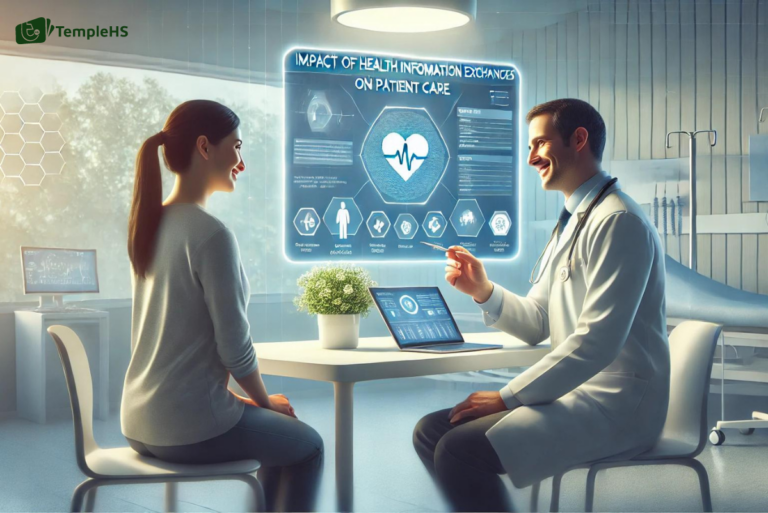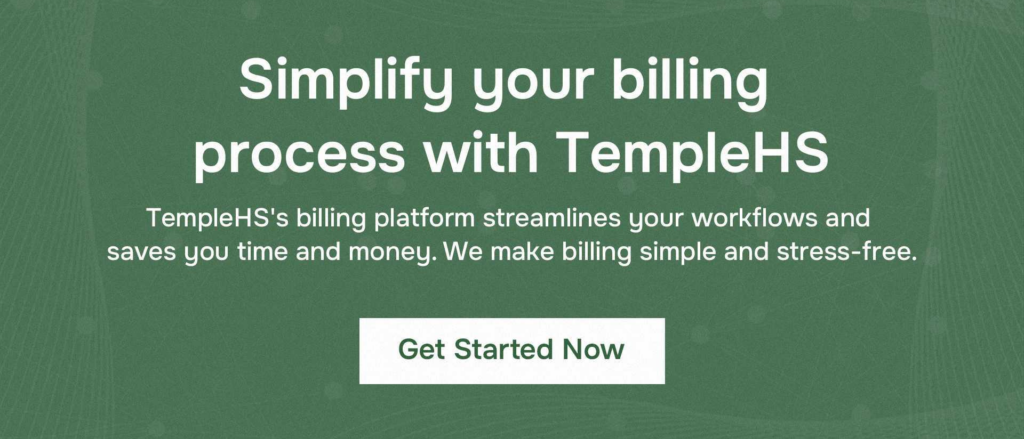The effective management of patient information is critical to the delivery of high-quality healthcare. Health Information Exchanges (HIEs) have become an essential component in facilitating the secure sharing of patient data among different healthcare providers. Understanding both the benefits and challenges of HIEs is essential for healthcare providers looking to improve patient outcomes.
This post will explore the impact of Health Information Exchanges on patient care, examining their potential advantages and the obstacles they face.
Defining Health Information Exchanges (HIEs)
Health Information Exchanges (HIEs) refer to the electronic sharing of health-related information among different healthcare organizations. This data exchange can occur within a region, community, or a broader national network. HIEs aim to provide healthcare providers with access to a patient’s complete medical history, regardless of where the patient has received care. By doing so, HIEs facilitate better-informed decision-making, enhance care coordination, and ultimately improve patient outcomes.
There are several types of HIEs, each with its own operational model. The most common types include:
Directed Exchange
This type of HIE allows healthcare providers to send and receive secure information electronically, often used for sharing test results, patient referrals, or discharge summaries.
Query-based Exchange
Here, healthcare providers can search for and retrieve patient information from other organizations, which is especially useful in emergency care situations.
Consumer-mediated Exchange
In this model, patients themselves control the use and distribution of their health information, enabling them to manage their own care more actively.
Each of these models plays a critical role in the healthcare ecosystem, ensuring that the right information is available at the right time to make informed healthcare decisions.
Benefits of Health Information Exchanges (HIEs)
1. Improved Patient Care and Safety
One of the most significant benefits of HIEs is the enhancement of patient care and safety. HIEs allow healthcare providers to access a patient’s comprehensive medical history, which includes prior diagnoses, medications, allergies, and previous treatment plans. This extensive access to patient data enables providers to make well-informed decisions that directly impact patient outcomes.
For instance, if a patient visits an emergency room, the attending physician can quickly retrieve the patient’s medical history via the HIE, ensuring that treatment decisions consider all relevant medical information. This capability significantly reduces the risk of medical errors, such as prescribing medications that might interact negatively with existing prescriptions or conditions.
Again, HIEs help avoid redundant tests and procedures. When healthcare providers can see that a particular test has already been performed and review the results, they can avoid subjecting the patient to the same test again. This not only spares the patient unnecessary discomfort but also speeds up the diagnosis and treatment process, leading to better and more efficient care.
2. Enhanced Care Coordination
Effective care coordination is critical, especially for patients with chronic conditions or those who see multiple specialists. HIEs facilitate the seamless sharing of information across different healthcare providers, ensuring that everyone involved in a patient’s care has access to the same data.
For example, if a patient with diabetes is being treated by both a primary care physician and an endocrinologist, the HIE allows both providers to access up-to-date information on the patient’s blood sugar levels, medications, and treatment adjustments. This shared information helps prevent conflicting treatment plans and ensures that all providers are aligned in their approach to the patient’s care.
Also, HIEs can significantly improve the transition of care from one provider to another. When a patient is discharged from a hospital and needs follow-up care from a primary care physician or specialist, the HIE ensures that the necessary information is transferred efficiently. This continuity of care reduces the likelihood of errors and ensures that patients receive timely and appropriate follow-up care.
3. Increased Efficiency and Cost Savings
HIEs contribute to increased efficiency within healthcare systems by reducing the time and resources spent on obtaining and sharing patient information. Traditionally, healthcare providers might rely on faxes, phone calls, or mail to exchange patient records, a process that is both time-consuming and prone to errors. HIEs streamline this process by enabling instant access to patient data, thereby speeding up decision-making and reducing administrative burdens.
The reduction in redundant testing and procedures that HIEs enable translates into significant cost savings for both healthcare providers and patients. For instance, if a hospital can access recent lab results through an HIE, it can avoid ordering those tests again, saving both the patient and the healthcare system the associated costs. Over time, these efficiencies contribute to lowering overall healthcare costs, making care more affordable and accessible.
4. Empowered Patients
HIEs also empower patients by giving them greater control over their health information. In consumer-mediated exchanges, patients can manage who has access to their health records and can share their information with new providers when necessary. This empowerment encourages patients to take a more active role in their healthcare, which is associated with better health outcomes.
When patients are informed and involved in their care decisions, they are more likely to adhere to treatment plans, attend follow-up appointments, and engage in preventive care measures.
Challenges of Health Information Exchanges (HIEs)
1. Data Privacy and Security Concerns
One of the most pressing challenges facing HIEs is ensuring the privacy and security of patient data. As health information is increasingly shared electronically, the risk of cyberattacks and unauthorized access grows.
HIEs must adhere to strict security protocols to protect sensitive information from breaches. This involves implementing encryption, secure user authentication, and regular monitoring for suspicious activity. Despite these measures, the threat of cyberattacks remains a significant concern, and healthcare organizations must continually adapt to evolving threats to maintain patient trust.
Compliance with regulations such as the Health Insurance Portability and Accountability Act (HIPAA) is essential. However, balancing the need for data accessibility with the need for stringent security measures can be challenging. Overly restrictive security protocols may hinder the efficient exchange of information, while lax protocols could expose sensitive data to risks.
2. Interoperability Issues
Interoperability is the ability of different systems and software to communicate, exchange, and use information effectively. In the context of HIEs, interoperability is crucial for ensuring that healthcare providers can access and share patient data seamlessly, regardless of the EHR system they use. However, achieving true interoperability remains a significant challenge due to the diversity of systems and standards in use across healthcare organizations.
Many healthcare providers use different EHR systems that may not be fully compatible with one another, leading to incomplete or inaccurate data exchanges. This lack of standardization can result in errors or omissions in patient records, undermining the effectiveness of HIEs. Efforts to develop universal standards for data exchange are ongoing, but until these standards are widely adopted, interoperability will continue to be a barrier to the full realization of HIE benefits.
3. High Implementation Costs
The financial costs associated with implementing and maintaining an HIE can be prohibitive, particularly for smaller healthcare providers. The initial setup costs include purchasing the necessary technology, integrating it with existing systems, training staff, and ensuring compliance with relevant regulations. Additionally, ongoing costs for system maintenance, updates, and cybersecurity measures add to the financial burden.
For many healthcare organizations, especially those with limited resources, these costs can be a significant barrier to HIE adoption. While the long-term benefits of HIEs in terms of efficiency and cost savings are clear, the upfront investment required can be daunting, leading some providers to delay or forgo implementation.
4. Resistance to Change
Resistance to change within the healthcare industry can impede the adoption of HIEs. Healthcare providers may be reluctant to adopt new technologies due to concerns about the learning curve, disruption to established workflows, or fears about data sharing. For example, some providers may worry that sharing patient data with other organizations could compromise their competitive advantage or lead to liability issues.
Overcoming this resistance requires not only technical solutions but also a cultural shift within the healthcare industry. Education and training programs can help providers understand the benefits of HIEs and how to use them effectively. Additionally, incentives such as financial rewards for meaningful use of HIEs can encourage adoption and integration into daily practice.
Conclusion
While HIEs are a powerful tool for advancing patient care, their successful implementation requires careful consideration of the associated challenges. By investing in robust security measures, promoting standardization, and fostering a culture of collaboration, the healthcare industry can overcome these obstacles and harness the full potential of HIEs to deliver better, more coordinated care to patients. The future of healthcare depends on the continued development and adoption of technologies like HIEs, which have the power to transform the way we manage and deliver care.



